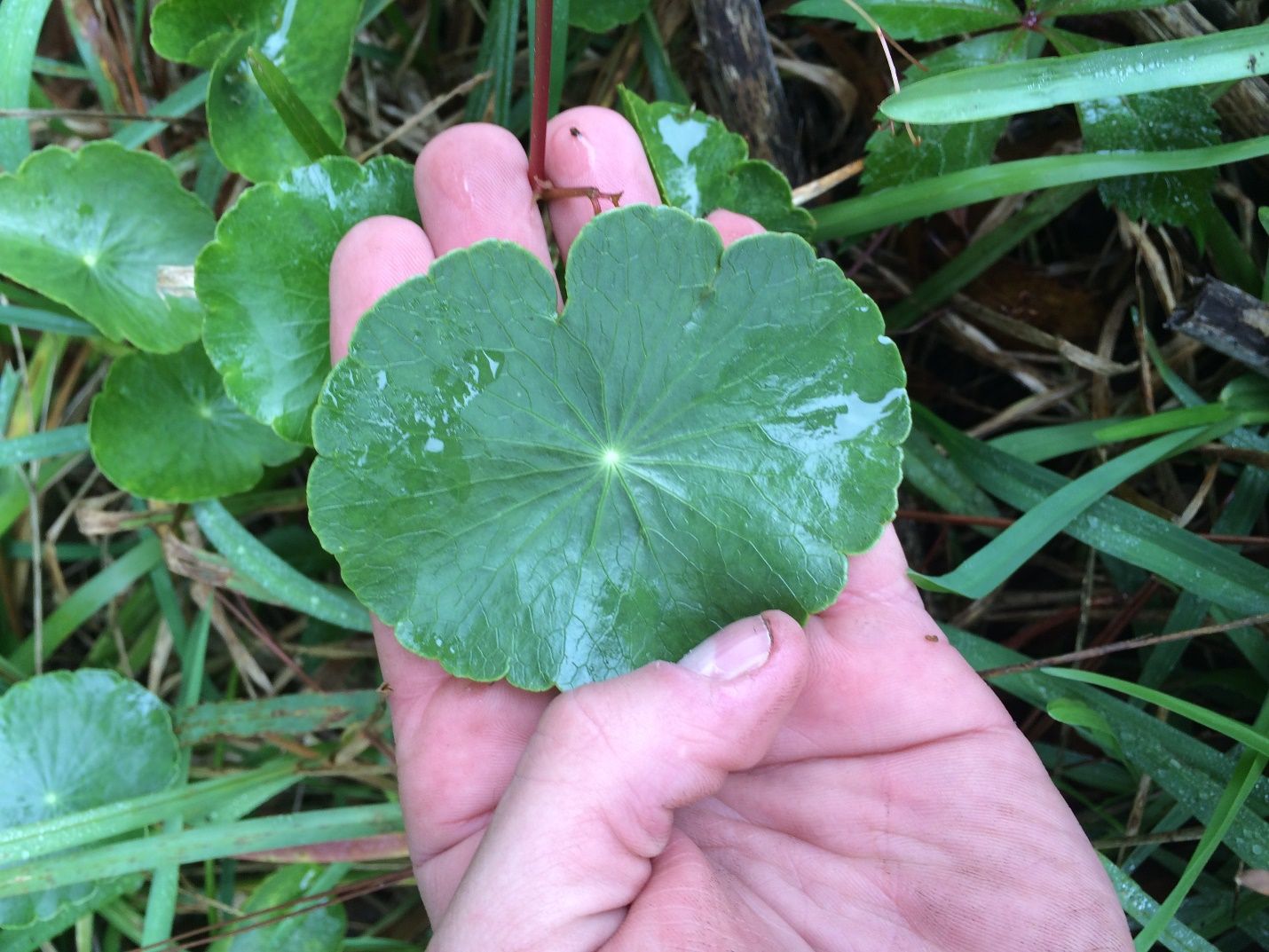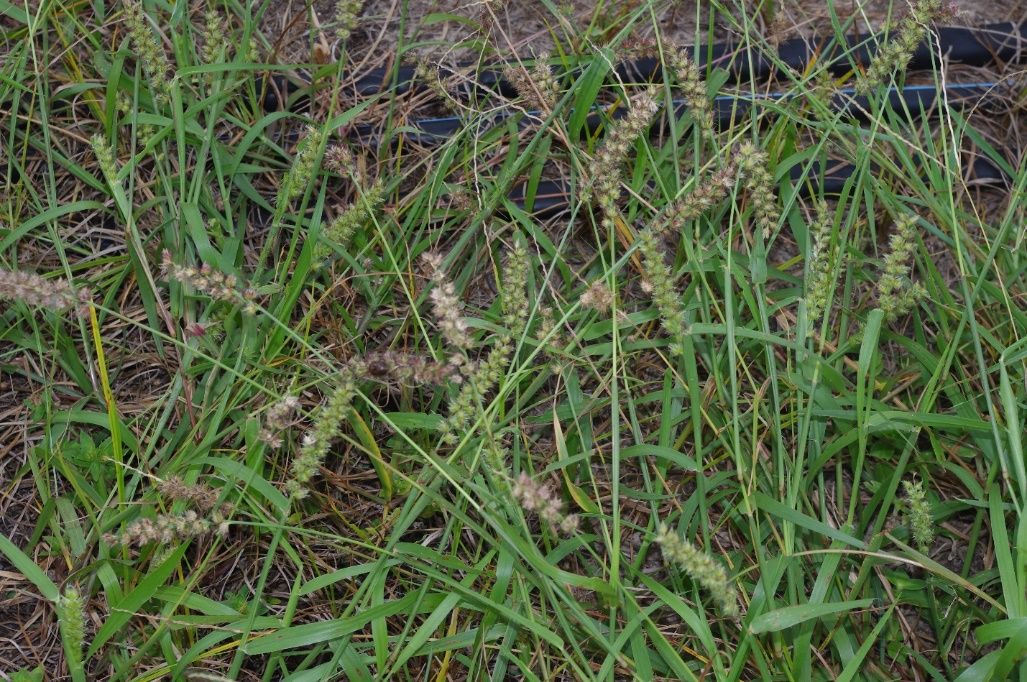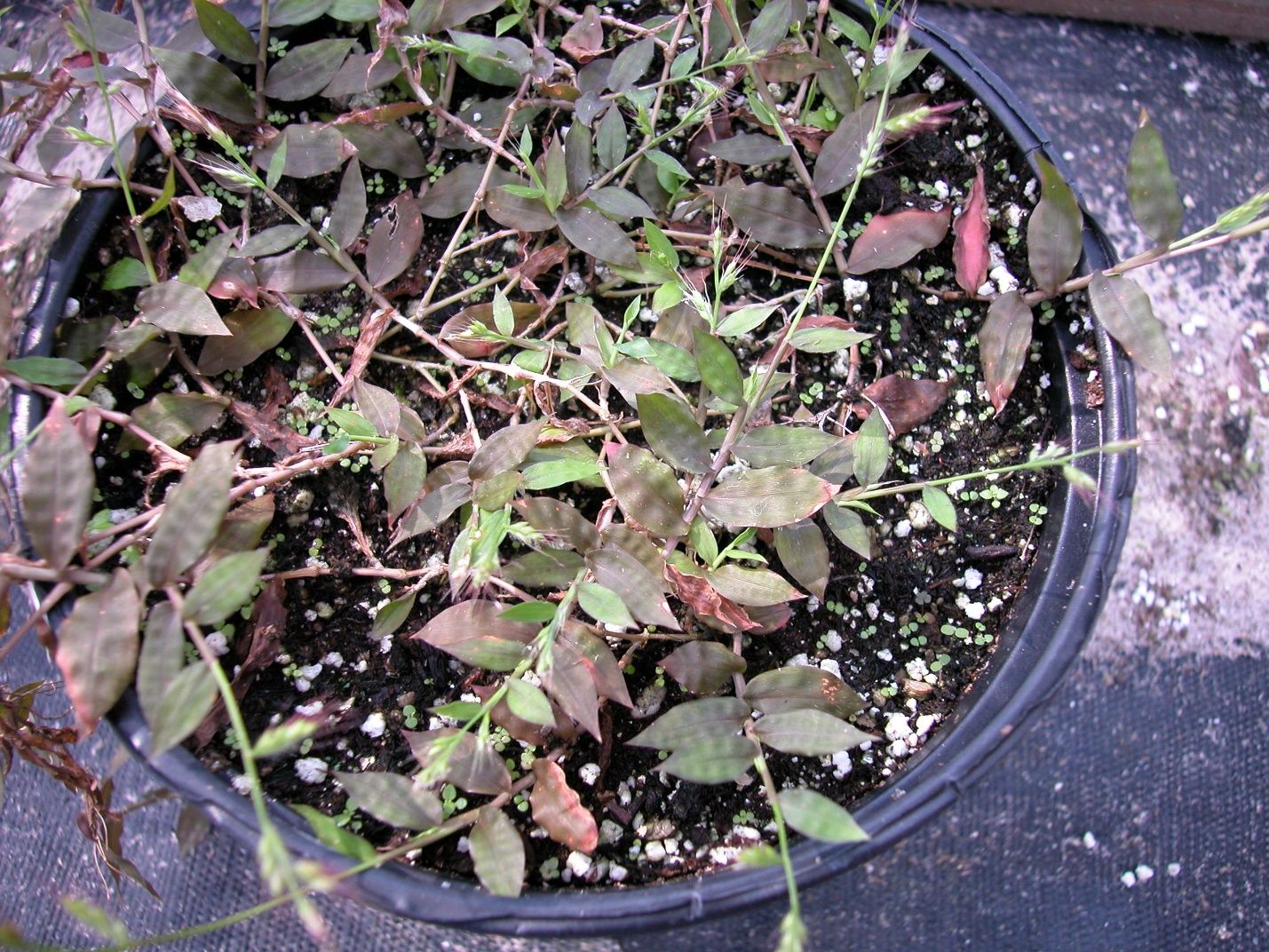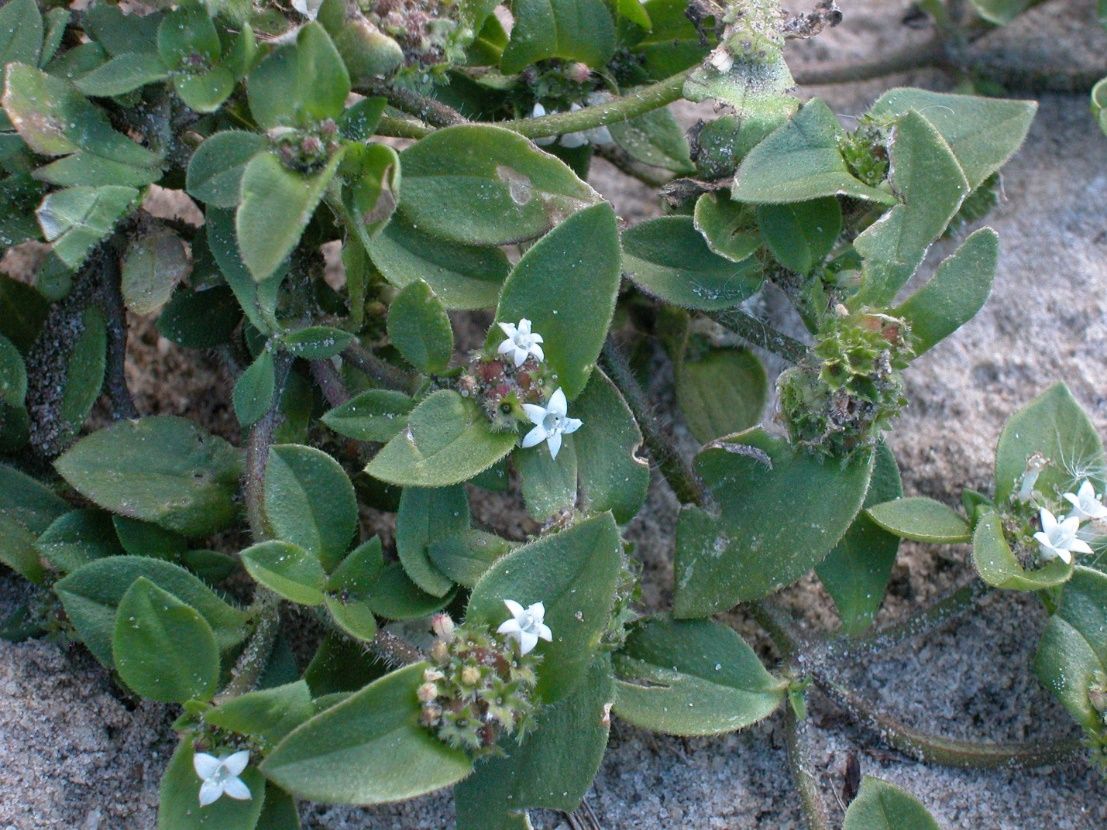Weeds as Indicators of Soil Conditions in Lawns and Landscapes
Introduction
Any plant growing where it is not needed is a “weed,” so any plant species can be considered a weed depending on the situation. Integrated pest management best maintains a weed-free landscape; consistently mowing at the correct height and providing adequate amounts of water and fertilizer, for example, keeps a lawn healthy. For more information on proper turf cultural practices, read UF/IFAS EDIS publications specifically pertaining to turfgrass and other documents about turfgrass management such as the Florida Lawn Handbook.
Weeds can be excellent indicators: species that may reflect or predict environmental conditions such as moisture levels, pH, soil fertility, light conditions, or compaction of the site. Certain weeds can indicate that an underlying issue is causing stress to turf or in poorly maintained planting beds. No matter what kind of environment you create—by mowing too low/high, leaving the turf too wet/dry, using too much or too little fertilization, etc.—there is a weed species that will thrive in that condition (Siddig, Ellison, Ochs, Villar-Leeman, and Lau 2016). The best way to prevent or reduce weed growth is to maintain a healthy turf and landscape plants.
This publication—intended for pest control professionals, landscape contractors, Master Gardeners, and homeowners—provides examples of weeds commonly found under specific environmental conditions. While weeds can indicate certain environmental conditions, some weed species can thrive in many different environments. For example, spotted spurge (Euphorbia maculata) can be indicative of a dry site, but it also grows well and spreads in over-irrigated sites. E. maculata and other adaptable weeds are followed by an asterisk in this publication’s tables. The presence of one or two weed species is not necessarily diagnostic of a specific cultural problem; but heavy infestations or the presence of multiple species that prefer a particular condition could indicate that cultural practices should be altered.
Moisture Levels
Moist/Wet Soils
A healthy lawn should be irrigated at most twice per week. Look for signs of stress before irrigating the lawn: leaf blades folding or turning blue gray or footprints and mowers leaving their tracks on the lawn. Apply ½ to ¾ inch of water at each supplemental irrigation cycle to condition the turfgrass to be drought tolerant as it will develop a deeper root system (Trenholm, Unruh, and Cisar 2017).
Lawns that are over-watered or in an area that remains wet for extended periods of time can become overtaken with problematic weeds which include sedges, doveweed, and dollarweed. One can control weeds in wet areas by hand-pulling them; watering less often or with less water per irrigation event; improving drainage in low lying areas; and/or planting alternatives to turf that will thrive in moist soils. These cultural practices can be used solely or in conjunction with the application(s) of herbicides.
Table 1. Weeds common in moist or wet soils.

Credit: Chris Marble, UF/IFAS
Dry Soils
On the opposite end of the spectrum, some weed species can thrive in dry soils and/or under drought-like conditions. In many cases, landscapes receive too much supplemental irrigation, but turf and landscape plants also can become stressed if not watered enough, especially during establishment. In these cases, certain weed species—listed in Table 2—can become more competitive.
Table 2. Weeds Common in Dry Soils
Soil pH
Soil pH is a measure of the acidity or alkalinity of the soil; a pH level of 7 is considered neutral. A pH level below 7 signifies that the soil is more acidic; soils above 7 are considered alkaline. Florida soils can widely vary depending on the area in the state, soil management, and the “parent material” of the turfgrass—i.e., the material that originally formed the soil. The only way to know your soil pH is via testing: sending in soil samples to a laboratory. More information on soil pH and how it can affect landscape plants can be found in the following publication: “Soil pH and the Home Landscape or Garden.” While soil testing is the only reliable way to determine soil pH, some weed species can give clues as to whether a soil is more alkaline or acidic. Weeds common in alkaline and acidic soils are found in Tables 3 and 4.
Alkaline/High pH Soils
Table 3. Weeds common in alkaline or high ph soils (>7).
Acidic/Low pH Soils
Table 4. Weeds common in acidic or low pH soils (<7).
Soil Fertility
There are 17 essential elements or nutrients that all plants require for normal growth and appearance. Of these 17 nutrients, the three that most people are familiar with are nitrogen (N), phosphorus (P), and potassium (K) because plants require these three in amounts larger than those of any other element. The best steps to take to determine if there is a soil fertility issue include looking for symptoms of poor fertility (yellowing, stunted growth, etc.) and sending soil or plant tissues to a laboratory for testing, as one would when calculating soil pH. A more in-depth overview of soil fertility can be found in “General Recommendations for Fertilization of Turfgrasses on Florida Soils” and in other EDIS landscape fertilization publications here.
If the lawn or other landscape areas are not fertilized properly, weeds can take over. If too few nutrients are available for the desirable landscape plants (turfgrass or ornamentals), growth and establishment could be reduced which might allow weeds to become more competitive (Blackshaw et al. 2003). In cases when a homeowner does not want to fertilize their future lawn or ornamentals, species should be chosen that can thrive with minimal to no supplemental fertilization. In contrasting cases, when too much fertilization is applied, many weed species utilize that fertilizer more efficiently than the landscape plants, and weed growth and reproduction increases. Too much fertilizer—especially in soluble or quick-release form—can harm turfgrass and other landscape plants which can allow weeds to be even more competitive.
Most weed species can thrive under high fertility levels, but not all can grow as well under low nutrient conditions. Good examples would be weeds such as clovers, beggarweeds, and creeping indigo, all of which are common in low N soils. A list of weeds that are common in low fertility soils is included in Table 5. While there are several weeds listed below, it should be noted that many weed species can thrive under a wide range of fertility levels.
Table 5. Weeds common in low fertility soils.

Credit: Annette Chandler, UF/IFAS

Credit: Annette Chandler, UF/IFAS
Shaded or Low Light Conditions
The amount of sunlight that a plant will need for optimum growth and health varies widely between different species. When there is too much sunlight, plants can become stressed and chlorotic; too little sunlight can cause leggy, spindly growth. Most of Florida’s turfgrass species need at least 6 hours of sunlight every day for optimal growth. When there is not enough sunlight, the turf will be stressed and thin, which can increase the competition from weeds. In cases where a plant is not receiving adequate sun, the best option will be to replace the turf or ornamental with a species that is better suited for that condition. More information on turfgrass growth in the shade can be found in “Growing Turfgrass in the Shade.” One may learn to select plant material based on their plant’s needs with the Florida-Friendly Landscaping™ Plant Guide.
While turfgrass or landscape plants can suffer if they get too much shade during the day, many weed species can thrive under low light levels. Table 6 lists the common weed species that can be found in shaded or low light areas.
Table 6. Weeds common in shaded or low light conditions.
Compacted Soils
Soils can become compacted by heavy foot traffic and machinery or as a result of urban development. In many new Floridian sub-divisions, trucks and machinery that are used to build homes grade and level the soil; this and other forms of soil compaction can negatively affect landscape plants. Multiple weeds, though, can grow and spread just fine in these areas. Weeds included in Table 7 are commonly found in compacted soils. If you suspect your soil is compacted, take the steps in “Soil Compaction in the Urban Landscape” to diagnose and correct the problem.
Table 7. Weeds common in compacted soils.
Saline Soils
Homeowners in Florida can sometimes have salt-affected soils. Natural circumstances, such as the soil being in proximity to the coast, can cause soil to be more saline, as can certain management practices, such as poor fertility management or the use of reclaimed irrigation water. More information is available in “Maximizing the Benefits of Reclaimed Water for Irrigating the Landscape and Protecting the Environment” and “Soils and Fertilizers for Master Gardeners: Tackling Soil Salinity Problems in the Home Landscape,” Two UF/IFAS EDIS publications. Some weed species that are common in saline soils are included in Table 8.
Table 8. Weeds common in saline soils.
Nematode Infestation
Nematodes are microscopic, unsegmented roundworms. Most nematodes are beneficial to plants and turfgrass, but plant parasitic nematodes are among the most difficult pests to manage in the home landscape. Information on nematode species, testing, and management are provided in EDIS publications here. In cases where nematodes are causing plant damage or resulting in thin or stressed turf, the weed species included in Table 9 may be present. Often serving as hosts of plant-parasitic nematodes, these species may be indicators of nematode populations. The weeds can also tolerate heavy infestations that other ornamental plants or weed species may not be able to (Thomas et al. 2005). The species listed in Table 9 are not always indicators of nematodes, but if they are prevalent and the problem cannot be attributed to some other cultural or maintenance issue or a biotic problem—such as an insect infestation or the presence of a disease—sampling for nematodes may be warranted.
Table 9. Weeds that can serve as indicators of plant parasitic nematode presence.

Credit: Annette Chandler, UF/IFAS
Summary
Despite the environmental conditions, at least some weed species will be able to grow in one’s landscape. Practicing the Florida-Friendly Landscaping™ Principles can keep weed problems to a minimum. If environmental conditions are suspected or determined to be the cause of the proliferation of a certain weed species, one can help mitigate the spread of certain weed species by improving cultural practices and using herbicides or other non-chemical options.
References
Blackshaw, R. E., R. N. Brandt, H. H. Janzen, T. Entz, C. A. Grant, and D. A. Derksen. 2003. “Differential Response of Weed Species to Added Nitrogen.” Weed Science 51(4):532–539. https://doi.org/10.1614/0043-1745(2003)051[0532:DROWST]2.0.CO;2
Cirillo, V., R. Masin, A. Maggio, and G. Zanin. 2018. “Crop-Weed Interactions in Saline Environments.” European Journal of Agronomy 99: 51–61. https://doi.org/10.1016/j.eja.2018.06.009
Derr, J. F. 2000. “Weeds as Indicators of Environmental Conditions.” TurfGrass Trends. https://archive.lib.msu.edu/tic/tgtre/article/2000jun9.pdf.
Jordan, J. 2018. “Weeds as Indicators.” Clemson Cooperative Extension Home and Garden Information Center. https://hgic.clemson.edu/hot-topic/weeds-as-indicators/
Murphy, T. R., D. L. Colvin, R. Dickens, J. W. Everest, D. Hall, and L. B. McCarty. 1992. Weeds of Southern Turfgrasses. Athens: University of Georgia Extension.
Siddig, A. A. H., A. M. Ellison, A. Ochs, C. Villar-Leeman, and M. K. Lau. 2016. “How do Ecologists Select and Use Indicator Species to Monitor Ecological Change? Insights from 14 Years of Publication in Ecological Indicators.” Ecological Indicators 60: 223–230. https://doi.org/10.1016/j.ecolind.2015.06.036
Trenholm, L. E., J. B. Unruh, and J. L. Cisar. 2013. “Watering Your Florida Lawn: ENH9/LH025, 4/2013.” EDIS 2013 (6): 1–3. https://doi.org/10.32473/edis-lh025-2013
University of Florida/IFAS Gardening Solutions. “Reading the Weeds.” https://gardeningsolutions.ifas.ufl.edu/care/weeds-and-invasive-plants/reading-the-weeds.html
Wallace, V., and A. Siegel-Miles. 2018. “Weeds as Indicators of Soil and Growing Conditions in Turf.” University of Connecticut Extension. Accessed September 1, 2021. https://uconn.sharepoint.com/sites/CAHNRExtension/Shared%20Documents/Forms/AllItems.aspx?id=%2Fsites%2FCAHNRExtension%2FShared%20Documents%2FIPM%2FTurf%20and%20Landscape%2Fweeds%5Fas%5Findicators%5Fof%5Fsoil%5Fand%5Fgrowing%5Fconditions%5Fin%5Fturf%2Epdf&parent=%2Fsites%2FCAHNRExtension%2FShared%20Documents%2FIPM%2FTurf%20and%20Landscape&p=true&ga=1



